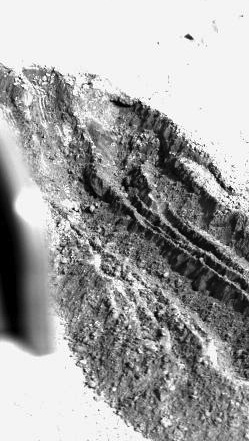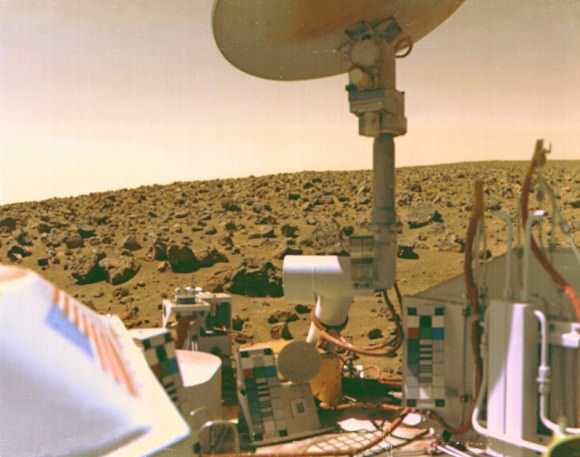The Curiosity rover is currently on its way to Mars, scheduled to make a dramatic landing within Gale Crater in mid-August and begin its hunt for the geologic signatures of a watery, life-friendly past. Solid evidence that large volumes of water existed on Mars at some point would be a major step forward in the search for life on the Red Planet.
But… has it already been found? Some scientists say yes.
Researchers from universities in Los Angeles, California, Tempe, Arizona and Siena, Italy have published a paper in the International Journal of Aeronautical and Space Sciences (IJASS) citing the results of their work with data obtained by NASA’s Viking mission.
The twin Viking 1 and 2 landers launched in August and September of 1975 and successfully landed on Mars in July and September of the following year. Their principal mission was to search for life, which they did by digging into the ruddy Martian soil looking for signs of respiration — a signal of biological activity.

A six-inch-deep trench in the Martian soil dug by Viking 1 in February 1977. The goal was to reach a foot below the surface for sampling.
By applying mathematical complexities to the Viking data for deeper analysis, the researchers found that the Martian samples behaved differently than a non-biological control group.
“Control responses that exhibit relatively low initial order rapidly devolve into near-random noise, while the active experiments exhibit higher initial order which decays only slowly,” the paper states. “This suggests a robust biological response.”
While some critics of the findings claim that such a process of identifying life has not yet been perfected — not even here on Earth — the results are certainly intriguing… enough to bolster support for further investigation into Viking data and perhaps re-evaluate the historic mission’s “inconclusive” findings.
The team’s paper can be found here.
Image credits: NASA/JPL-Caltech. Also, read more on Irene Klotz’s article on Discovery News.
Source: Universe Today

No hay comentarios:
Publicar un comentario